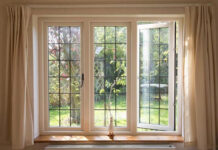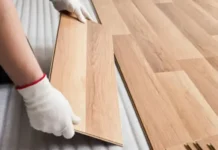From the outside, a termite infestation may seem like the kiss of death for a homeowner. However, with the proper precautions, you can keep your space clear of unwanted visitors and rid your walls if termites sneak in.
Fortunately, there are several signs of infestation you can look for to confirm your suspicions and begin treatment, allowing you to address the problem before it gets out of hand. If you suspect you may have a pest infestation, contact a qualified termite exterminator to confirm your hunches and tackle the invasion head-on.
Swarmers
A termite swarm likely indicates pesky invaders in your home, so keep an eye out for termite clouds that occur right after the insect eggs hatch. In many cases, their presence is temporary – a few hours, at most. However, if you notice swarmers sticking around for more than a few hours or the next day, they’re likely trying to take root in your home or elsewhere on your property.
Discarded wings
If you’re unsure where a swarm decided to land, take a look around your property for termite wings. Once termites find a place to settle, they discard their wings. Small piles of termite appendages could indicate the presence of mature termites, so contact professionals immediately if you catch wind of discarded wings.
Mud tubes
Often mistaken for ordinary dirt, mud tubes on your foundation often signal that termites are nearby. The underground systems protect termites as they travel from the ground to exposed wood.
If you suspect the tubes are new, break one off and check the inside for live termites. If you find living pests inside the holes, you can assume an infestation is present. However, an absence of termites doesn’t mean you’re in the clear. So make sure to check back frequently for live termites and additional holes.
Damaged wood
Perhaps the most apparent sign of pest infestations is damaged wood, so keep a close eye out for spongy, crumbling, or warped wood in your walls or floors. Squeaky floorboard or maze-like patterns in wood are also indicative of a termite colony.
You can check for damaged wood by knocking on infected areas and listening for a hollow sound. If your foundation is still intact and healthy, the sound should be sturdy.
Stuck doors and windows
You might think stuck windows or doors are due to humidity in the air. However, it could also be a sign of a termite colony. As termites bore through the exposed wood of window and door frames, they can cause the wood to warp. As the lumber warps, it can make your windows or doors stick. If you’re unsure what’s making your windows and doors tough to open, look for other signs of a termite infestation to confirm.
Termite droppings
Drywood termites leave behind frass, or droppings, as they eat through wood. The droppings often resemble wood shavings, so they can be easy for a person to miss. If you happen to come across these small piles, take a moment to look for other signs of a termite infestation. Droppings coupled with wood damage, discarded wings, or mud tubes likely mean termites are in your home.
Wrapping up
Although a termite infestation can be detrimental without proper treatment, it doesn’t have to destroy your home. When you remain diligent, you’ll be able to quickly pick up the signs of a colony and contact a termite specialist to rid your property of unwanted pests.

































































![Best Methods of Data Recovery in 2023 [Recover Files Quickly] Data Recovery in 2023](https://www.apzomedia.com/wp-content/uploads/2023/02/Best-Methods-of-Data-Recovery-in-2023-100x70.jpg)

